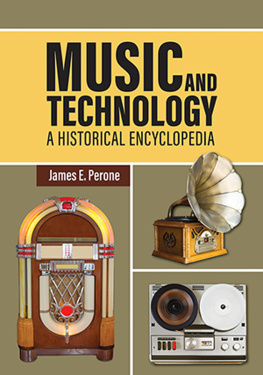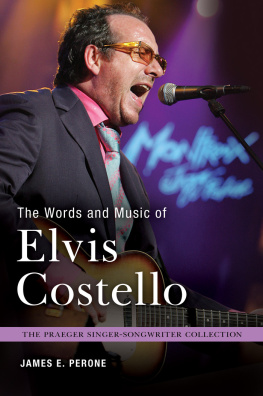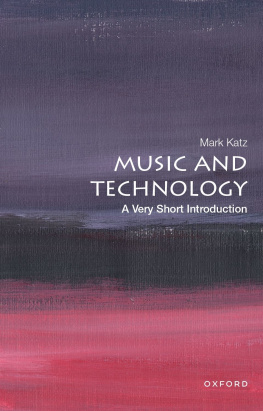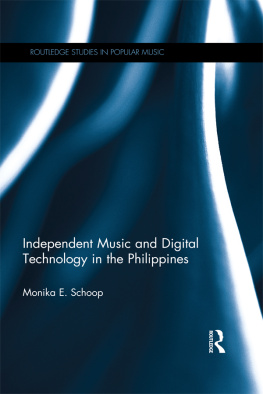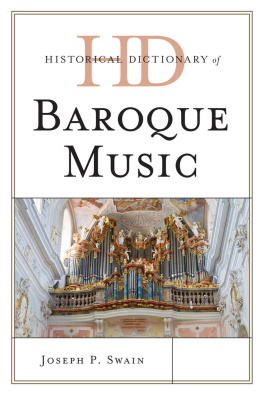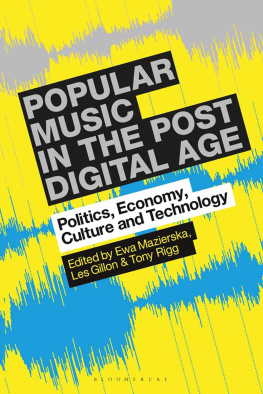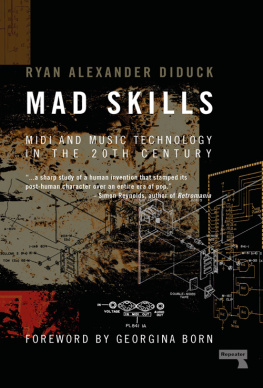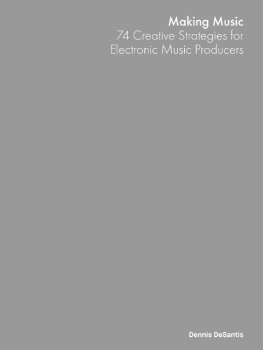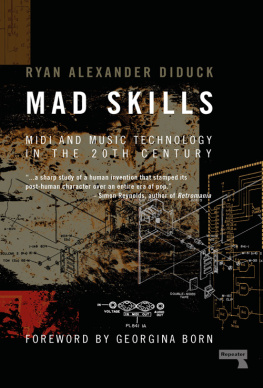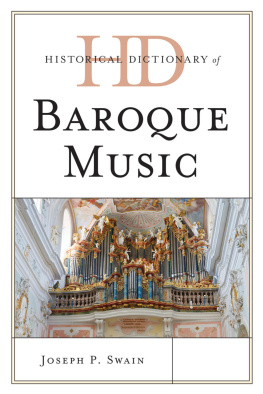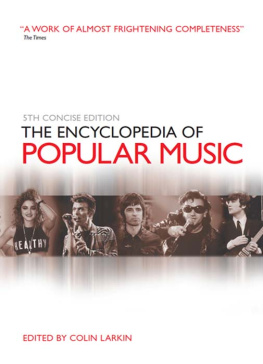Music and Technology
Music and Technology
A Historical Encyclopedia
James E. Perone

Copyright 2022 by ABC-CLIO, LLC
All rights reserved. No part of this publication may be reproduced, stored in a retrieval system, or transmitted, in any form or by any means, electronic, mechanical, photocopying, recording, or otherwise, except for the inclusion of brief quotations in a review, without prior permission in writing from the publisher.
Library of Congress Cataloging-in-Publication Data
Names: Perone, James E., author.
Title: Music and technology : a historical encyclopedia / James E. Perone.
Description: [1st edition.] | Santa Barbara : Greenwood, 2022. | Includes bibliographical references and index.
Identifiers: LCCN 2021054210 (print) | LCCN 2021054211 (ebook) | ISBN 9781440878299 (hardcover) | ISBN 9781440878305 (ebook)
Subjects: LCSH: Music and technologyEncyclopedias. | SoundRecording and reproducingEncyclopedias. | Electronic musical instrumentsEncyclopedias.
Classification: LCC ML102.T44 P37 2022 (print) | LCC ML102.T44 (ebook) | DDC 780.3dc23
LC record available at https://lccn.loc.gov/2021054210
LC ebook record available at https://lccn.loc.gov/2021054211
ISBN: 978-1-4408-7829-9 (print)
978-1-4408-7830-5 (ebook)
26 25 24 23 221 2 3 4 5
This book is also available as an eBook.
Greenwood
An Imprint of ABC-CLIO, LLC
ABC-CLIO, LLC
147 Castilian Drive
Santa Barbara, California 93117
www.abc-clio.com
This book is printed on acid-free paper 
Manufactured in the United States of America
Contents
The topic of music and technology can suggest many different things to different people. As discussed in this books Introduction, this volume is based on a broad definition of the topicbroad in the sense of the time period covered and in the types of technologies that have influenced, affected, and, in some cases, suddenly changed the way we create, distribute, and consume music.
The Chronology chapter provides brief overviews of significant connections between music and technology over the course of hundreds of years, with the caveat that the rate of change has dramatically accelerated, particularly with the development of radio, electronic musical instruments, and amplification beginning in the 1920s, and with the advent of sound synthesis and the linkage of computers and music during the 1950s through the present. The next section, the Introduction, provides more detail on the major technological changes connected with music over the years, along with discussion of some of the broader sociological significance of these developments.
The alphabetically arranged entries on music technology through the years focus on 100 significant examples of technological changes that have impacted the creation, production, dissemination, recording, and/or consumption of music. Again, I have taken a historically broad approach to selecting these 100 examples. As one might reasonably expect, Robert Moogs analog monophonic synthesizer of the 1960s is included, as are streaming audio services, and MIDI (Musical Instrument Digital Interface); however, I have also included some examples of the connection between music and technology that, important as they might be, are easy to be overlooked by the general public. These include the development of music printing from movable type to the development and now widespread use of music education software. The recent lockdowns, stay-at-home orders, and so on, associated with the COVID-19 pandemic, have also helped to expose more of us around the world to some technologies and music-sharing and music-collaboration applications that, although some may have been around for several years, suddenly became commonplace in the year 2020. These entries include discussion of some of these technologies, particularly from the standpoint of their sociological significance during the pandemic.
Throughout this book, I have attempted to avoid the use of technical terms without explanation, as well as the discussion of technological details that require the knowledge base of a musical or technology expert. Still, some terms and concepts related to music and/or technology are necessary in order to adequately cover the topics. Therefore, this volume includes a Glossary, in which I provide brief explanations of some of the terms that might require more explanation than that which will fit in the other sections of the book. For other musical or technological terms that are unfamiliar, I suggest using one of the concise and reputable online dictionaries, such as Encyclopdia Britannica (brittanica.com), which is an easily accessible source for basic definitions.
I have included annotations for some of the entries in the Bibliography; however, these generally are limited to entries in which the names of the author and source alone might not make it clear exactly what can be gleaned from that particular source.
As one might imagine, technological advances related to music that occurred over the course of hundreds of years include some that are more notable, more influential, and more widely known than others. I have included 22 sidebars throughout the volume to provide moderately sized chunks of information about individuals and technological innovations that either expand upon the main entries in the book or that provide a look at some of the connections of music and technology that were not quite up to the level of meriting an entire 1,000-plus word entry in the AZ section. Included among the sidebars are a few that decidedly are not well known and that may at first appear to be quirky outliers on the spectrum of music-technology connections. I have included these as examples of some of the oddities that have occurred or that have been invented over the years that might broaden our understanding of what has been tried, even if sometimes with little success or little lasting impact.
ACKNOWLEDGMENTS
I wish to thank the entire staff at ABC-CLIO, as well as the copyeditors and others with whom they subcontract, for all of their help in getting this volume from the concept to the published stage. I am especially indebted to Catherine Lafuente, who first approached me with the idea for this volume. I wish to thank my wife and best friend, Karen Perone, for all the support that she continues to give me on all my writing projects. As I worked on this project, I drew particularly strong inspiration from one of my graduate school professors, the late Dr. Lejaren Hiller. Dr. Hiller was acknowledged as one of Americas early computer music experts, particularly because of his work in the 1950s at the University of Illinois. One of the most unusual and most memorable courses I took in graduate school was Dr. Hillers course on 20th-century music composition techniques. It is because Dr. Hiller began our study course by looking back to such things as medieval isorhythmic motets, Johann Sebastian Bachs use of numerology, Wolfgang Amadeus Mozarts extensive tonicization of various keys in his Symphony No. 40 in G minor, K. 550, and Robert Schumanns unusual key motion by the interval of a third in the Symphony No. 1, Op. 38, that I was inspired to offer a wide definition of music technology in selecting the topics for this volume. I also wish to thank composer Charles Ames who also broadened my knowledge of computer applications in music during my graduate student years at the State University of New York at Buffalo. It was because of Charless friendship and influence that my first publication came in the form of a computer-based BINGO caller, programmed in BASIC, that appeared years and years ago in

